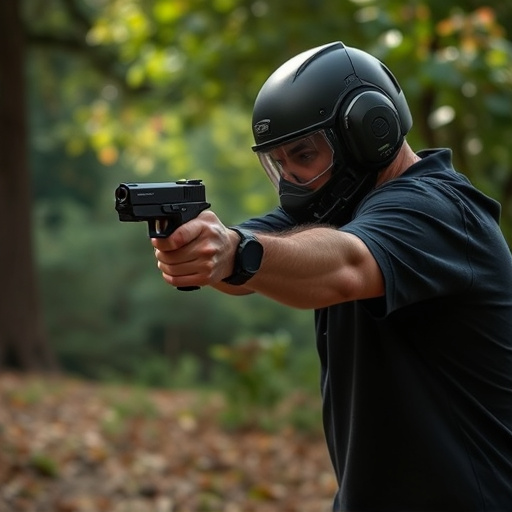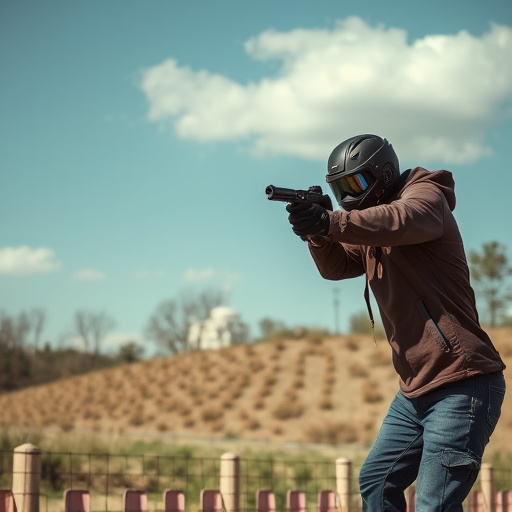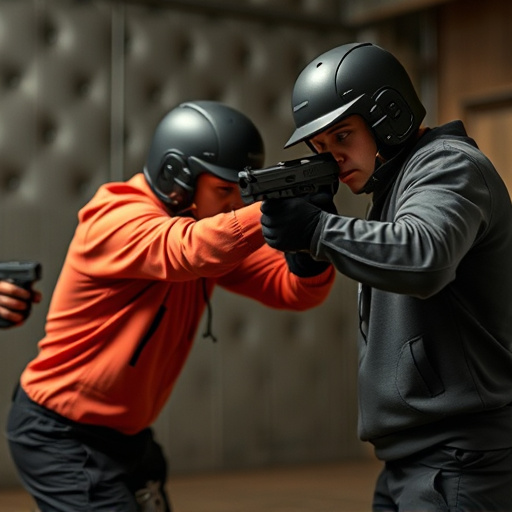Taser Paralysis Duration: Factors, Legalities, and Stun Gun Choices
Understanding the temporary nature of Taser paralysis (a few seconds to minutes) is key for responsi…….
Understanding the temporary nature of Taser paralysis (a few seconds to minutes) is key for responsible self-defense. Buying compact, user-friendly stun guns that align with individual needs and fit easily in various carrying spaces empowers individuals to take control of their security. Prioritizing de-escalation techniques and proportionality in usage, along with clear instructions, proper storage, and regular maintenance, ensures both effectiveness and safety when using stun guns.
“Discover the critical factor of taser deployment: paralysis duration. This article delves into the science behind how long individuals remain paralyzed after a stun gun strike, exploring factors that can impact this time frame. We dissect what influences the paralytic effect, providing a comprehensive guide for buyers considering purchasing easy-to-carry and use stun guns. Furthermore, we navigate legal implications and post-deployment care, emphasizing safety measures essential for responsible ownership.”
- Understanding Taser Paralysis Duration: What You Need to Know
- Factors Influencing Paralytic Effect: A Comprehensive Look
- Choosing the Right Stun Gun: Considerations for Ease of Carry and Use
- Legal Implications and Safety Measures: Navigating Post-Deployment Care
Understanding Taser Paralysis Duration: What You Need to Know

Understanding the duration of paralysis after a Taser deployment is crucial for individuals considering self-defense options, as well as for law enforcement professionals. Paralysis from stun guns typically lasts for a brief period, ranging from a few seconds to several minutes. This temporary incapacity is designed to disrupt an assailant’s movements and provide the user with time to escape or call for help.
When choosing self-defense tools, buying stun guns that are easy to carry and use is essential. A shorter duration of paralysis means that users can quickly assess the situation after deploying the Taser, allowing them to take appropriate action without prolonged risk. This knowledge empowers individuals to make informed decisions in potentially dangerous scenarios, ensuring their safety and promoting responsible self-defense practices.
Factors Influencing Paralytic Effect: A Comprehensive Look

The duration of paralysis induced by a Taser deployment varies based on several factors, making it a complex physiological response. Key influencers include the model and power output of the Taser, as well as the target’s physical attributes like body mass and muscle composition. Proximity to the target is another critical variable; closer range generally results in a shorter duration due to the higher electric current density.
Furthermore, environmental conditions can play a role. For instance, wet or moist skin reduces electrical resistance, potentially prolonging the paralytic effect. Conversely, certain medications or medical conditions might diminish the body’s ability to conduct electricity, leading to a shorter duration of paralysis. Understanding these factors is essential for individuals considering purchasing stun guns that are easy to carry and use, as it empowers them with knowledge to make informed decisions regarding self-defense.
Choosing the Right Stun Gun: Considerations for Ease of Carry and Use

When considering purchasing a stun gun for self-defense, one crucial aspect is choosing a model that is both easy to carry and simple to operate. Accessibility and ease of use are paramount, especially in high-stress situations. Look for stun guns designed with compact, lightweight frames that can easily fit in pockets, purses, or cars, ensuring you have it readily available when needed.
Additionally, consider devices with straightforward activation mechanisms, like a simple press of a button or a quick twist of the device. These features enable users to deploy the stun gun swiftly and effectively without requiring extensive training or complex steps, making them ideal for individuals who prioritize personal safety and want a reliable, easy-to-carry self-defense tool. Buying stun guns that are easy to carry and use empowers individuals to take control of their security with confidence.
Legal Implications and Safety Measures: Navigating Post-Deployment Care

The duration of paralysis after a taser deployment is a critical factor with significant legal implications. Law enforcement agencies and individuals carrying stun guns must be aware that prolonged immobilization can lead to potential injuries, especially in those with pre-existing health conditions. In many jurisdictions, excessive use of force, including unnecessary tasing, can result in civil lawsuits and criminal charges. Therefore, training should emphasize the importance of de-escalation techniques and proportionality in using such devices.
Navigating post-deployment care involves ensuring immediate medical attention for individuals affected by taser shocks, especially if they experience prolonged muscle paralysis or other adverse effects. It’s advisable to buy stun guns that are easy to carry and use, allowing users to quickly disable potential threats while minimizing the risk of injury. Safety measures should include proper storage, regular maintenance, and clear instructions on usage, ensuring both effectiveness and user safety.
In conclusion, understanding the duration of paralysis from taser deployment is crucial for both individuals considering self-defense options and law enforcement professionals. By recognizing the factors influencing the paralytic effect and making informed choices about suitable stun guns, users can ensure better safety and effectiveness. Remember that buying stun guns that are easy to carry and use is essential for staying prepared while adhering to legal implications and implementing necessary safety measures post-deployment.


